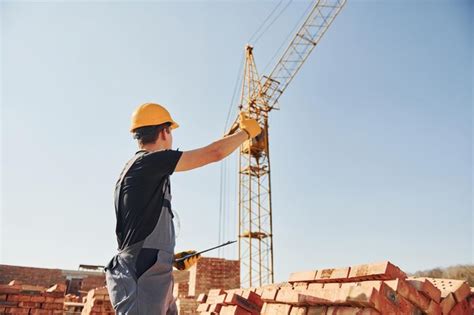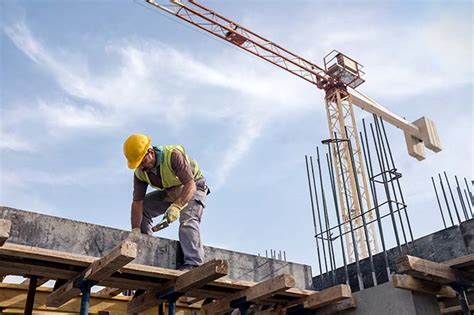Construction defects can lead to significant financial losses and safety concerns, prompting many property owners to seek legal recourse through lawsuits. Understanding the complexities involved in these cases is crucial for both legal professionals and those affected by such issues. In this article, we delve into a specific construction defects lawsuit, providing a detailed case study analysis. By examining the background of the case, the legal arguments presented, and the outcomes, we aim to shed light on the key aspects that influence the success or failure of these lawsuits. This analysis offers valuable insights and lessons for those navigating the challenging landscape of construction defect litigation.
Dive deep into this topic alongside alijyun.com
1. Introduction
Construction defects pose a significant threat to property owners, causing substantial financial damage, safety hazards, and long-term complications. These defects, frequently concealed beneath the surface, may go undetected until they have already inflicted significant harm. When these issues arise, property owners often seek legal recourse to recover compensation for the damages incurred. However, navigating construction defect lawsuits is a complex process, requiring meticulous attention to legal, technical, and procedural considerations.
This article delves into the complexities of construction defect litigation by analyzing a real-world case study. We examine the lawsuit’s background, key legal arguments presented, and the court’s final decision, aiming to provide a thorough analysis of factors influencing case outcomes. This exploration seeks to provide valuable insights for attorneys, property owners, and industry professionals alike. Whether you are actively engaged in a construction defect dispute or simply interested in the legal intricacies of construction law, this case study offers a detailed examination of the challenges and potential results of such litigation. Our objective is to equip readers with the knowledge needed to navigate the challenging landscape of construction defect lawsuits effectively.

2. Overview of Construction Defects Lawsuits
Construction defect lawsuits occur when property owners find flaws in their building’s construction causing damage, safety hazards, or diminished property value. These defects can be minor cosmetic issues or serious structural problems threatening the building’s integrity. Common causes of these defects include design flaws, substandard workmanship, use of inferior materials, and noncompliance with building codes or industry standards.
Typically, legal action commences when the property owner files a lawsuit against those involved in the construction. This could include the general contractor, subcontractors, architects, engineers, or material suppliers. To succeed, the plaintiff must demonstrate that the defect resulted from negligence, a breach of contract, or a warranty violation. Litigation often necessitates expert testimony, thorough inspections, and intricate legal arguments to determine liability and the extent of financial losses.
Construction defect lawsuits are complex and expensive legal battles, demanding a strong foundation in both construction methods and legal theory. The resolution of these cases carries significant financial weight for both property owners and construction professionals. A comprehensive understanding of the legal framework and potential obstacles in these matters is critical for all participants in construction or real estate development.

3. Case Study Background
The case study at the center of this analysis involves a residential condominium project that experienced significant construction defects shortly after completion. The property, a multi-story building with numerous units, was plagued by water intrusion issues that led to mold growth, structural damage, and health concerns for the residents. The defects were traced to improper installation of the building’s exterior cladding and inadequate waterproofing measures, both of which were critical to protecting the structure from the elements.
The homeowners’ association (HOA) representing the condominium owners initiated a lawsuit against the general contractor, subcontractors, and the architectural firm responsible for the design. The lawsuit alleged negligence, breach of contract, and breach of implied warranty, claiming that the parties involved failed to meet the necessary standards of care in the construction process.
The defendants denied liability, arguing that the defects were the result of poor maintenance by the HOA and not the construction itself. This dispute set the stage for a complex legal battle involving expert witnesses, extensive documentation, and technical analysis to determine the root cause of the defects and assess the responsibility of each party involved.

4. Analysis of the Case Study
This case study sheds light on crucial aspects of construction defect litigation, starting with the critical issue of liability. The court meticulously examined the evidence presented by both parties, including expert opinions on construction standards, building codes, and maintenance procedures. Plaintiffs’ experts argued that the defects stemmed from deficient workmanship and inadequate design. Conversely, the defense attempted to shift responsibility to the homeowners’ association, citing their alleged negligence in maintenance.
The court’s decision hinged on documentation proving that construction defects were recognized during the building process but ignored by the contractors. This evidence bolstered the plaintiffs’ arguments of negligence and contractual breach. Moreover, the court recognized the implied warranties associated with new construction, which guarantee a property’s freedom from substantial defects and suitability for its intended use.
The court ultimately sided with the plaintiffs, finding the general contractor and subcontractors responsible for the building defects. The architectural firm was also held partially liable for design flaws that exacerbated the water intrusion problems. The ruling awarded substantial damages to the homeowners’ association to compensate for repair costs and associated expenses.
5. Lessons Learned
This case study underscores crucial lessons for all stakeholders in construction projects. First, it emphasizes the paramount importance of strict adherence to industry standards and building codes throughout the entire construction process. Contractors, subcontractors, and design professionals must prioritize meeting the required quality standards in their work to mitigate the risk of liability for any defects.
Another key lesson is the importance of thorough documentation. In this case, the plaintiffs’ ability to produce evidence of defects discovered during construction played a pivotal role in establishing liability. Both construction professionals and property owners should maintain detailed records of all phases of a project, including inspections, communications, and any issues that arise.
For property owners and homeowners’ associations, this case illustrates the significance of early detection and prompt action when construction defects are suspected. Addressing issues as soon as they are identified can prevent further damage and strengthen the legal position in potential litigation.
Lastly, this case highlights the critical role of expert testimony in construction defect lawsuits. Expert analysis of the construction methods and materials was essential in determining the cause of the defects and assigning responsibility. Engaging qualified experts can greatly influence the outcome of these complex legal disputes
6. Conclusion
The residential condominium project case study highlights the intricate nature of construction defect lawsuits. It underscores the crucial role of adhering to construction standards, maintaining meticulous documentation, and addressing any concerns promptly throughout and after construction. For construction professionals, this case emphasizes the importance of diligence and adherence to best practices to preempt costly legal disputes.
This case highlights the importance of proactive measures for property owners when defects are suspected. Early intervention and vigilance can lead to favorable outcomes, as demonstrated by the homeowners’ association’s success. Through effective legal representation and expert testimony, it is possible to hold those responsible accountable and obtain compensation for damages.
This analysis offers crucial insights into the complexities of construction defect litigation, highlighting the key factors that determine case outcomes. Whether you are a legal expert, property owner, or a member of the construction industry, grasping these insights can empower you to navigate the intricacies of construction defect lawsuits with greater confidence and success.
alijyun.com

